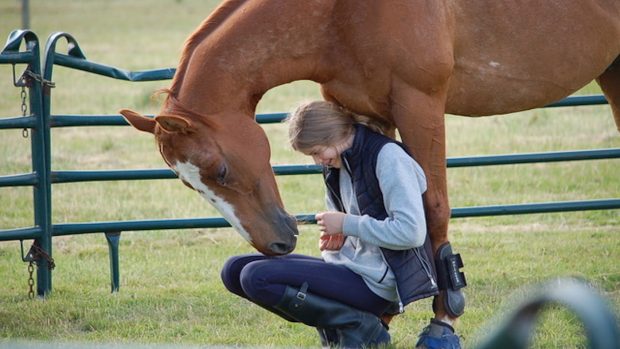What makes a good endurance horse?
Two main things: they’ve got to be sound and also tough – both physically and mentally. Arabs are the most popular breed, but I have had success with other types.
The horse must have “action and attitude”, but, as I am tall, I can only really ride Arabs if I have roller skates on the soles of my boots! At the highest level, the horse has to have class: any horse can go slowly round a course, but winning combinations go at speed.
How do you train them?
It takes several years to get a horse to 100-mile race standard and I find they are eight or nine years old by the time they¨re ready.
It is important at all stages of training to keep the horse schooled. Basic schooling improves muscle tone and creates manners, which are all important in a horse with whom you will be spending a long period of time. I also jump and hunt the horse – both activities develop balance, critical for the terrain over which some endurance rides take place.
With four-year-olds, I start with a few 10-mile pleasure rides and then on up through the grades. At the end of their fifth or sixth year, I aim to have them at Gold series standard, having completed one 30-mile, two 40-mile and one 50-mile ride (not races).
During the next two years, the distance increases to 80 miles, slowly at first and then, as the horse learns its job, I increase the average speed.
Endurance horses also have to learn to drink “on the job”, and we spend time teaching them to drink sweetened water (with apple juice, sugar beet water or molasses) to mask any differences between water at events.
What do you feed?
Young horses and those at the lower grades compete off horse and pony cubes – at up to 4-5kg a day. It’s only once the distance, and, more importantly, the speed increase that I change to a high-energy feed.
For stamina, I use a high digestible fibre and oil-based compound for the top horses – at about 7kg a day, with 8kg of haylage and some alfalfa chop. I use salt daily and electrolytes tactically.
Do they eat well?
This varies between horses, but it is not uncommon for a horse to go off its food at the time of the competition.
It’s rare that the horse doesn’t eat some form of forage. My big concern is water, as dehydration is the major factor to limit performance.
Do your horses have muscle problems?
Muscle problems go alongside any hard-working athlete, but feed-related problems, such as tying up, do occur if a rider has done too much feeding up before a competition, or fed too high an octane fuel for the length or speed of work required.
High-fibre diets are de rigeur at all levels, and I use oil and starch to top up energy supply when the work demands it.
What about your fitness?
As a rider, you have to be fit, otherwise the horse will need to work harder to carry you.
I keep myself fit by working on the farm at home, but running alongside the horse and trips to the gym are essential for top riders.
What advice have you for future endurance riders?
Two points: first, a schooled endurance horse is a better ride and will stay sounder than an unschooled one.
Second, it is more complex than just riding in a straight line, so learn all the details, from route planning to nutrition and basic physiology.



